Update 03.31.2018 -- Run 9 Embedding: Charged Hadron Triggers, Corrected
Previously, I had compared charged hadron triggers extracted from the Run 9 dijet embedding sample to the pi0 triggers we analyze in data. The physics (wrt. to the recoil jets) should be the same between the 2 triggers. And since charged hadrons are much more abundant than pi0's, they offer a means to extract enough statistics for a response matrix from the Run 9 embedding. This is discussed in this post:
https://drupal.star.bnl.gov/STAR/blog/dmawxc/update-01152018-run-9-embedding-charged-hadron-triggers
However, there was tension between the embedding (charged hadron) and data (pi0) "recoil" track and tower pT distributions. This turned out to be a bug in the macro I was using -- likely in how I implemented my trigger selection and how I implemented the recoil condition -- and so below I present the corrected results. The correct numbers of triggers per bin of partonic pT are:
| partonic pT [GeV/c] | no. of triggers |
| (5, 7) | 6 |
| (7, 9) | 36 |
| (9, 11) | 204 |
| (11, 15) | 627 |
| (15, 25) | 2827 |
| (25, 35) | 8516 |
| > 35 | 4508 |
| total | 16724 |
| data (pi0) | 22030 |
Note that this is for only the RFF configuration of the embedding sample; adding the FF configuration will approximately double the charged hadron statistics. The hot tower list used in this calculation is attached. Below are the corrected distributions starting with the various trigger distributions. The discrepancy in the total track and tower multiplicity is okay considering the excellent agreement at the track and tower level.
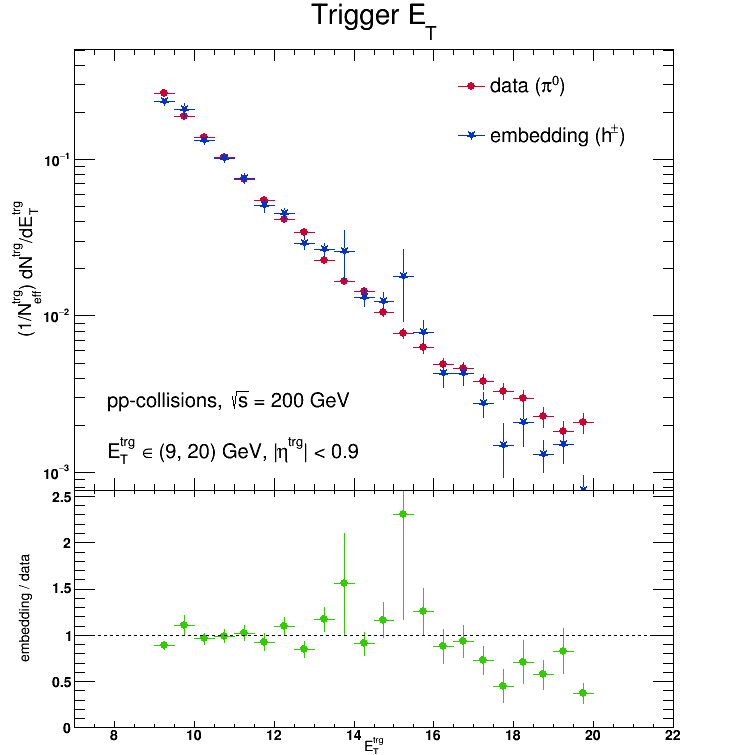

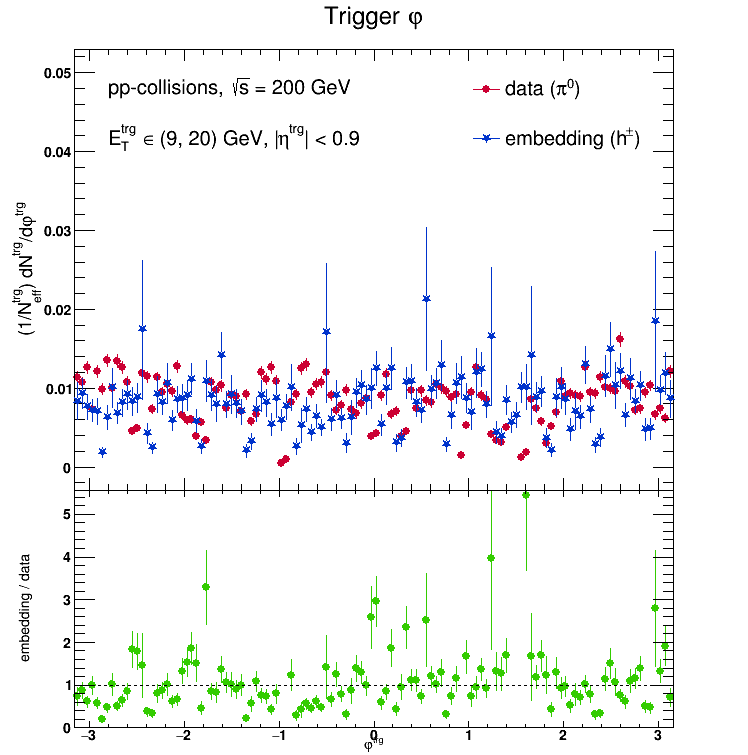
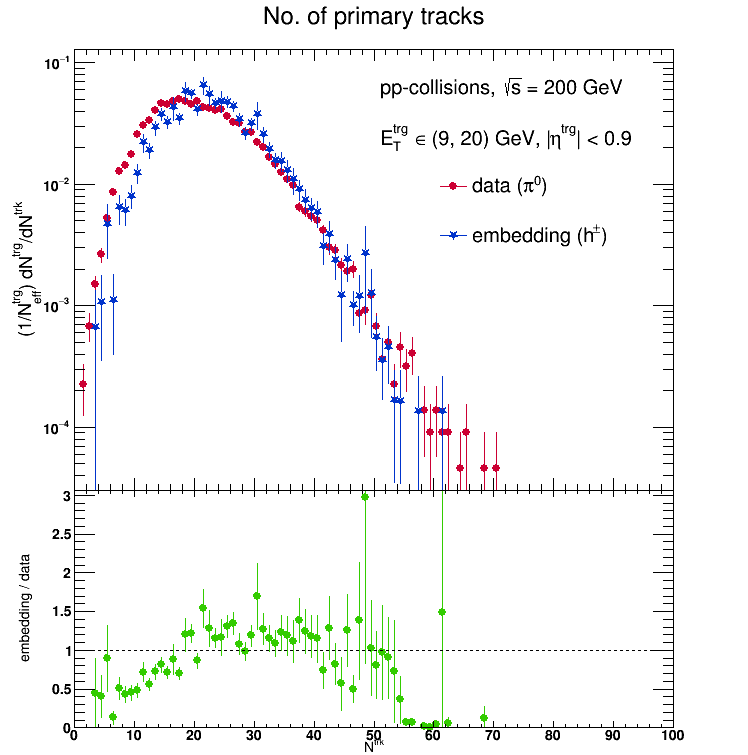

Next, are the track and tower distributions for all tracks and towers (not just the recoil constituents). The discrepancy at high pT in the tower distribution is to be expected: the pi0 trigger consists of 1 or 2 towers, and we only store the ID of the central tower of the cluster. Hence, we can only remove the central tower from the calculation. This discrepancy disappears when considering only towers on the recoil side.
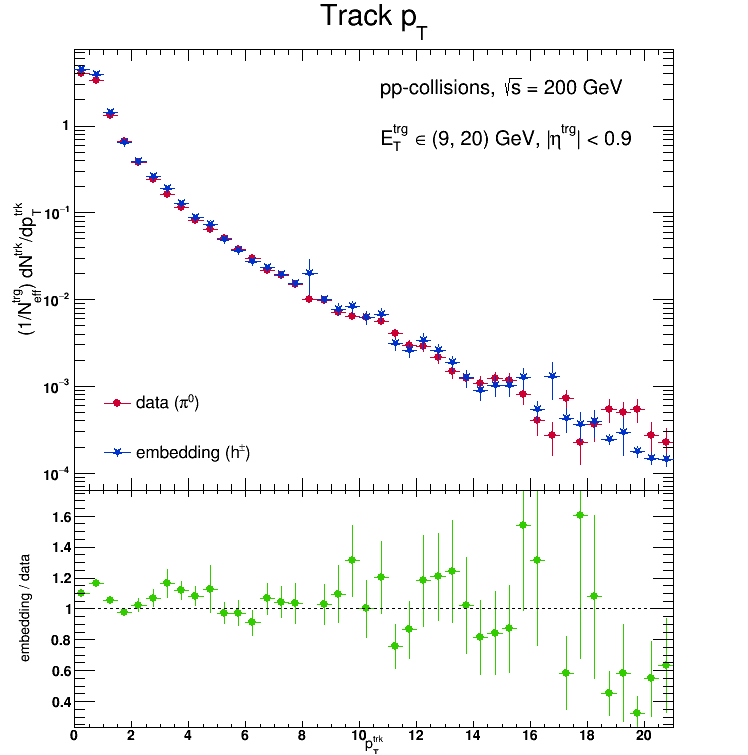
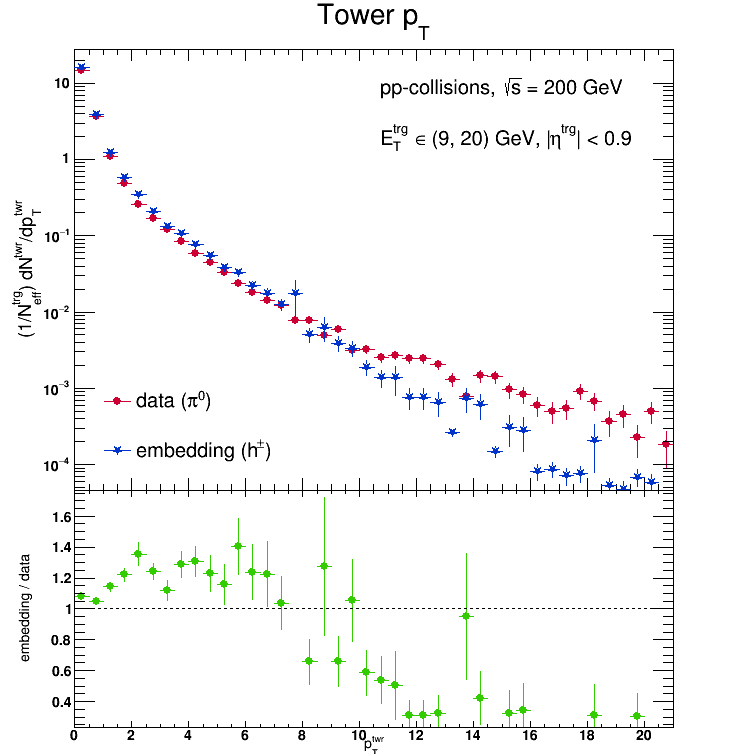
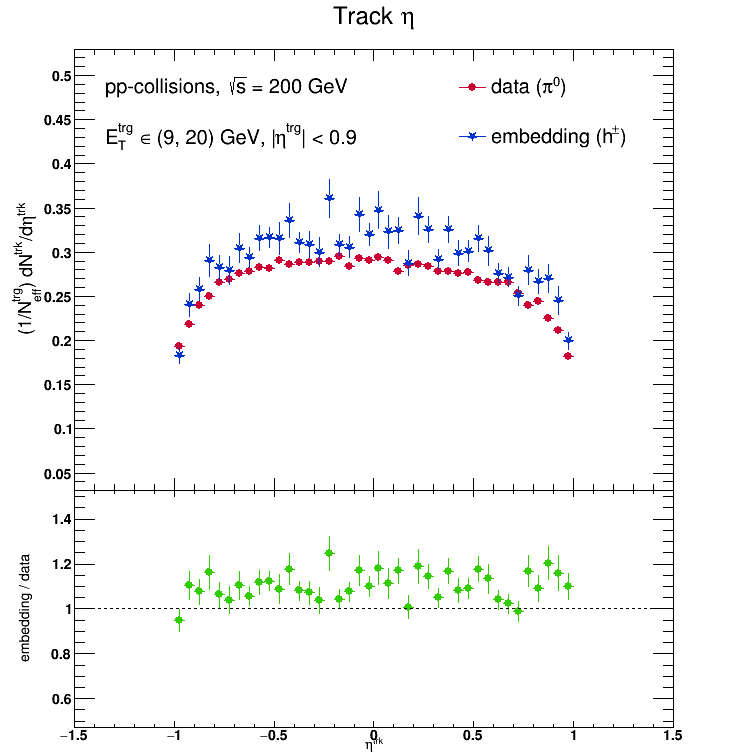
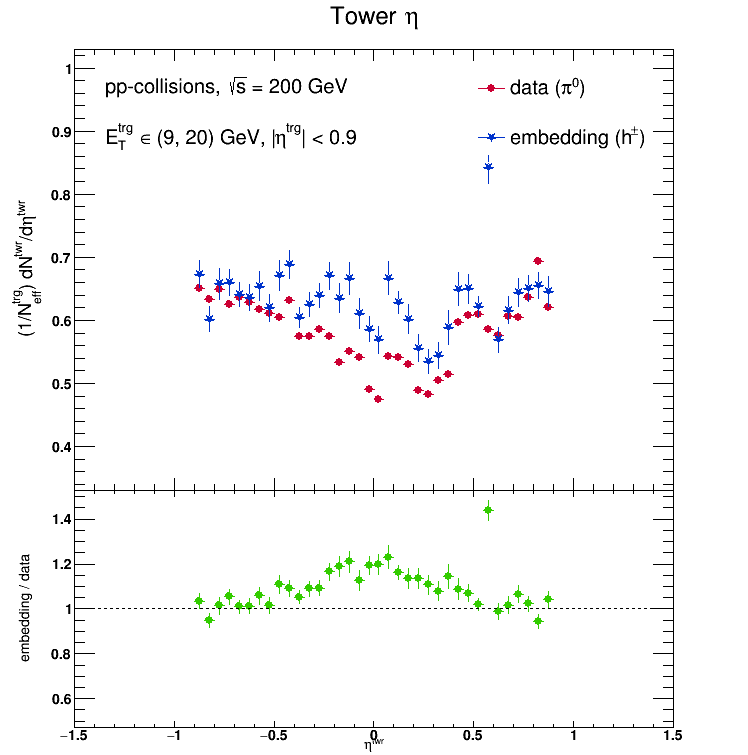
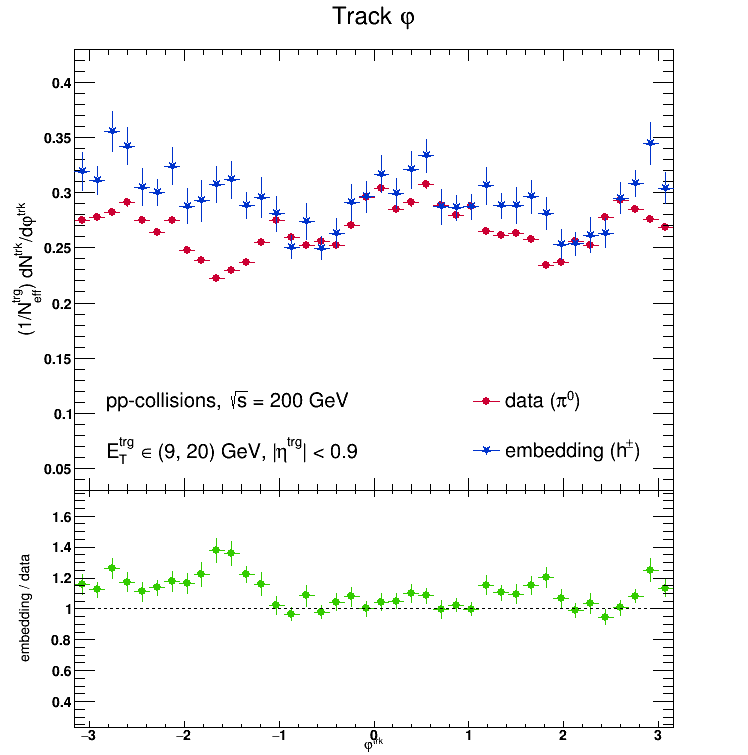
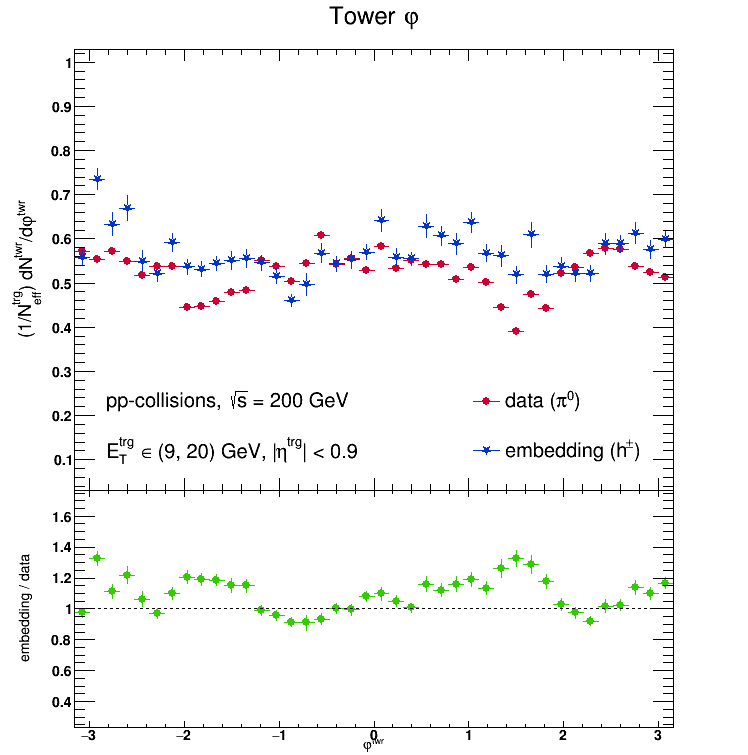
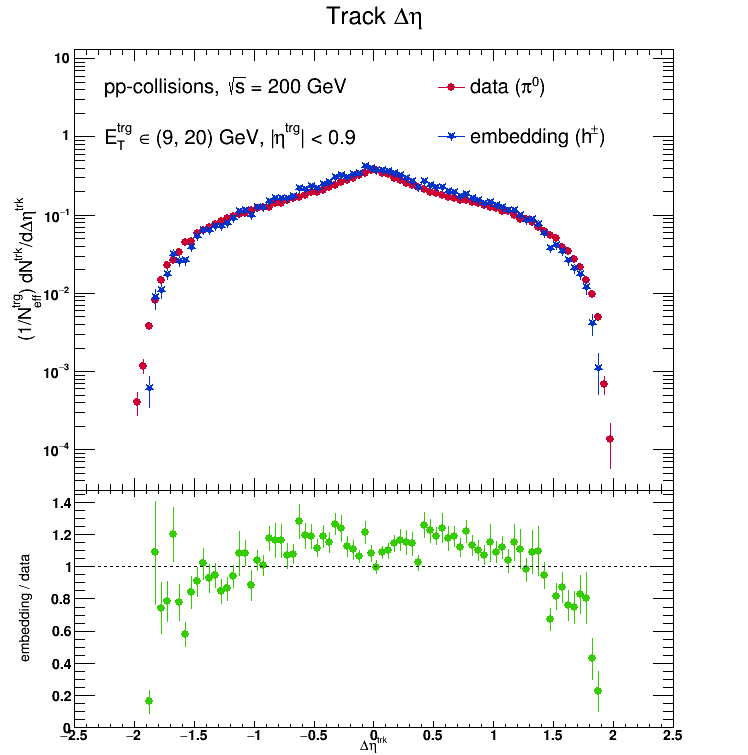


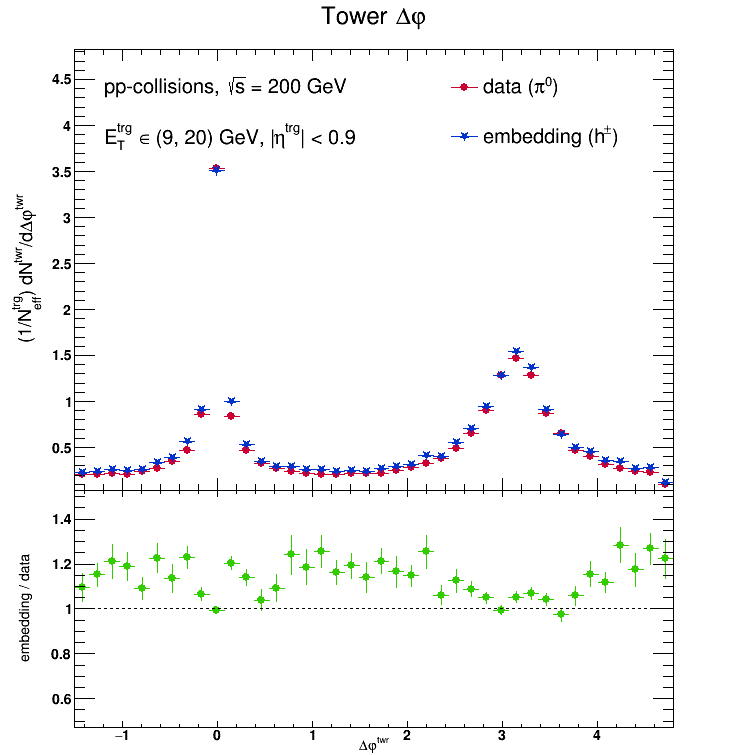
Lastly, here are the "recoil" track and tower distributions. In this context, "recoil" is defined to be the hemisphere opposite the trigger (charged hadron or pi0), i.e. delta-phi = pi +- pi/2.

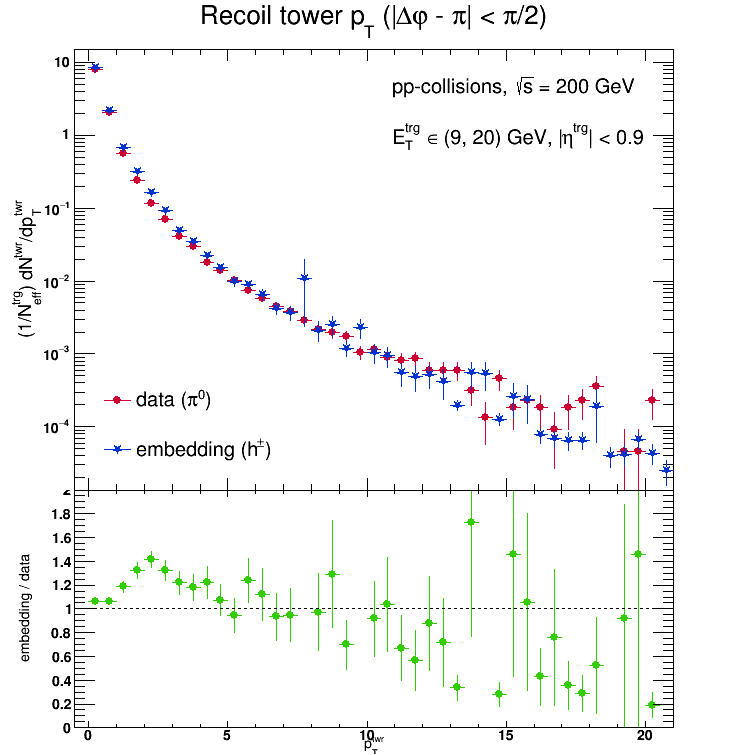
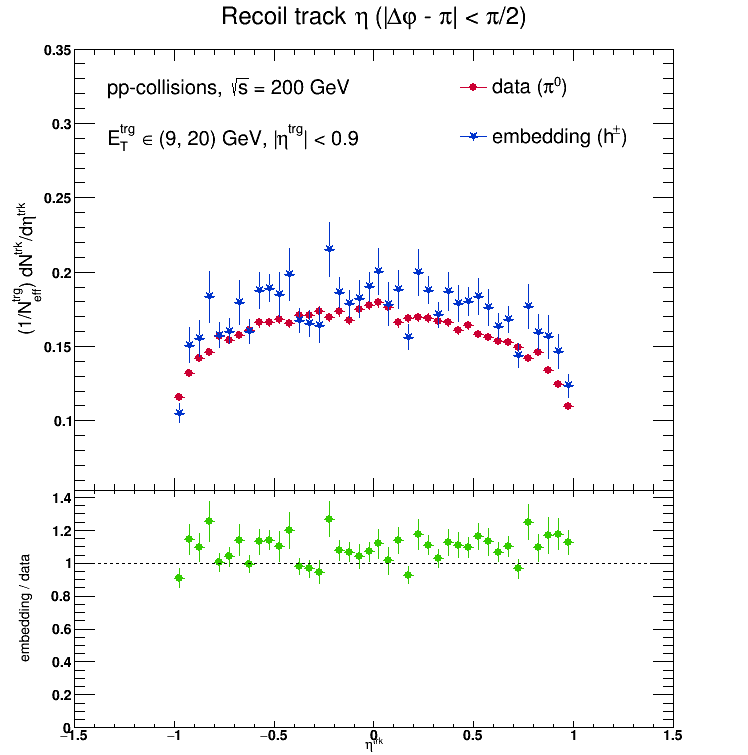
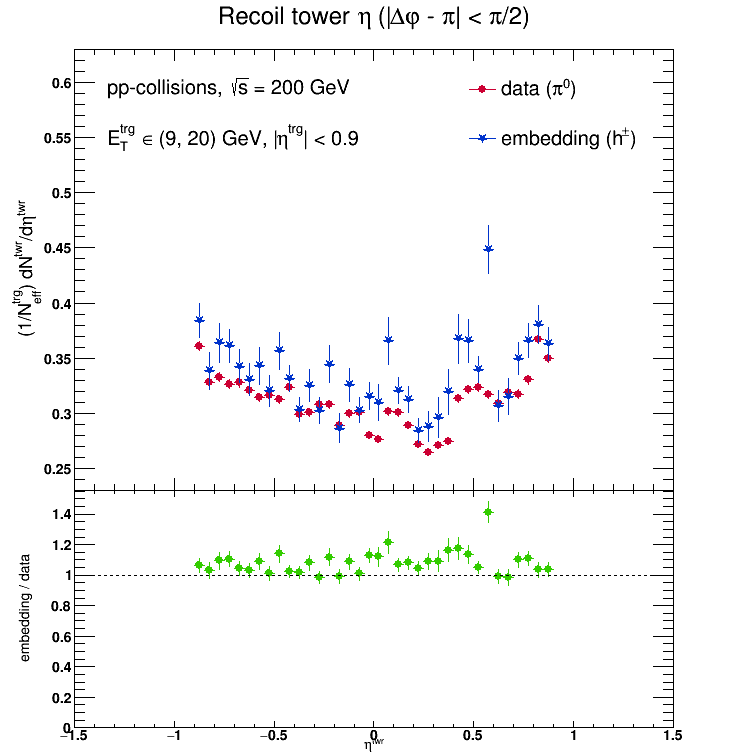

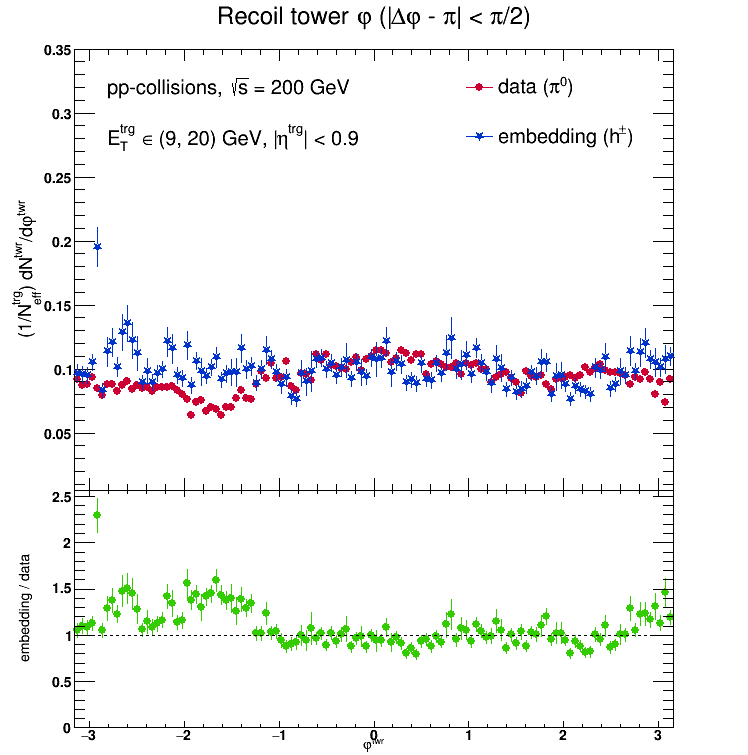
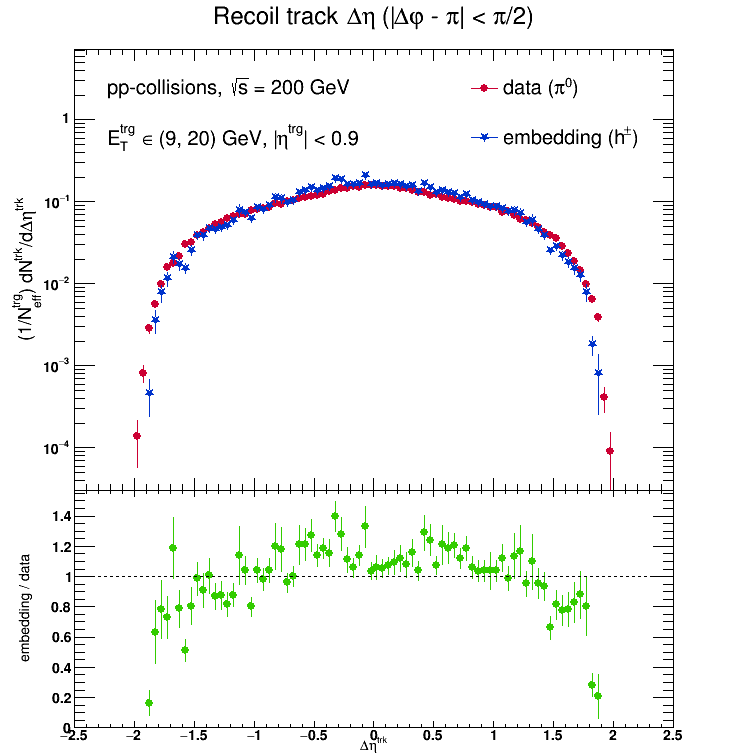
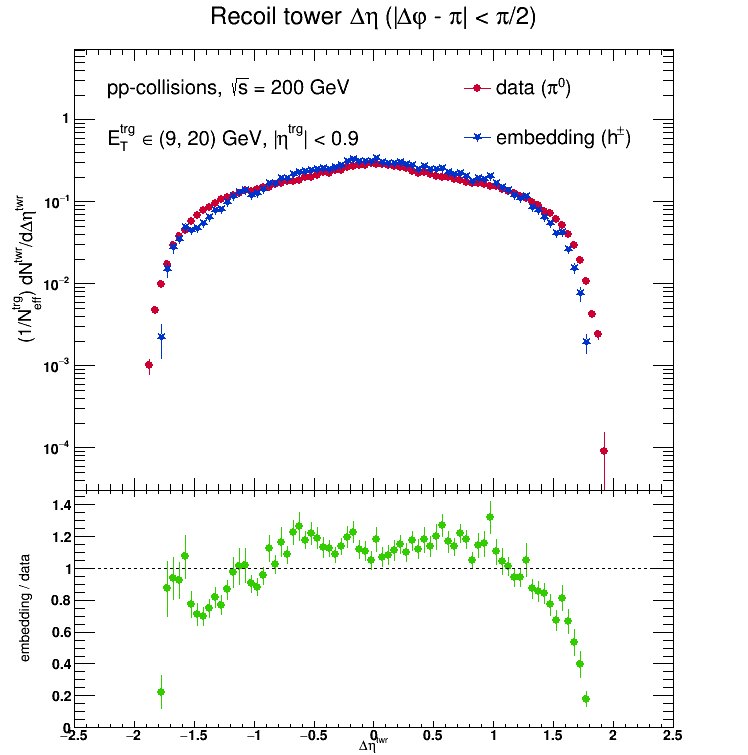
It is concerning, however, that there seems to be bias in the track and tower azimuth in data. For phi approximately in (-pi, -pi/2), the data are systematically below the embedding. This is likely why the embedding distributions are systematically higher than the data in delta-phi...
- dmawxc's blog
- Login or register to post comments
